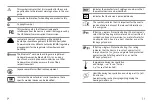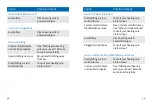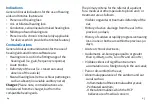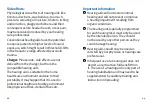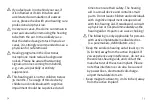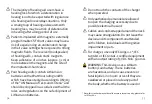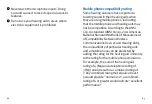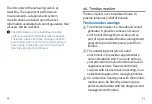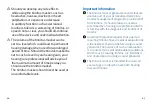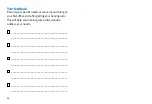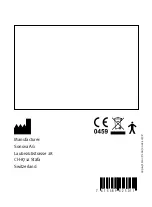
80
81
Charger and power supply must be protected
against shocks. If the charger or power supply
is damaged after a shock, the devices must
not be used anymore.
Store your hearing aids in the charger if you
are not using them for a long period of time.
If you are not using your hearing aid for a
long period of time, store it in a box with a
drying capsule or in a well ventilated location.
This allows moisture to evaporate from your
hearing aid and prevents a potential impact
on its performance.
Special medical or dental examination
including radiation described below, may
adversely affect the correct functioning of your
hearing aids. Remove and keep them outside
the examination room/area before undergoing:
•
Medical or dental examination with X-ray
(also CT scan).
•
Medical examinations with MRI/NMRI scans,
generating magnetic fields. Hearing aids
do not need to be removed when passing
security gates (airports etc.). If X-ray is used
at all, it will be in very low doses, and will not
affect the hearing aids.
The hearing aids have to be dry before
charging. Otherwise the charging reliability
cannot be guaranteed.
Only use approved charger described in this
user guide for charging your hearing aids,
otherwise the devices may be damaged.
Make sure that you always completely dry
your hearing aid after use. Store the hearing
aid in a safe, dry and clean place.
These hearing aids are water resistant and not
waterproof. They are designed to withstand
normal activities and occasional accidental
exposure to extreme conditions. Never
immerse your hearing aid in water. These
hearing aids are not specifically designed for
extended periods of water submersion on a
continual basis, that is worn in activities such
as swimming or bathing. Always remove your
hearing aid before these activities, as the
hearing aid contains sensitive electronic parts.

